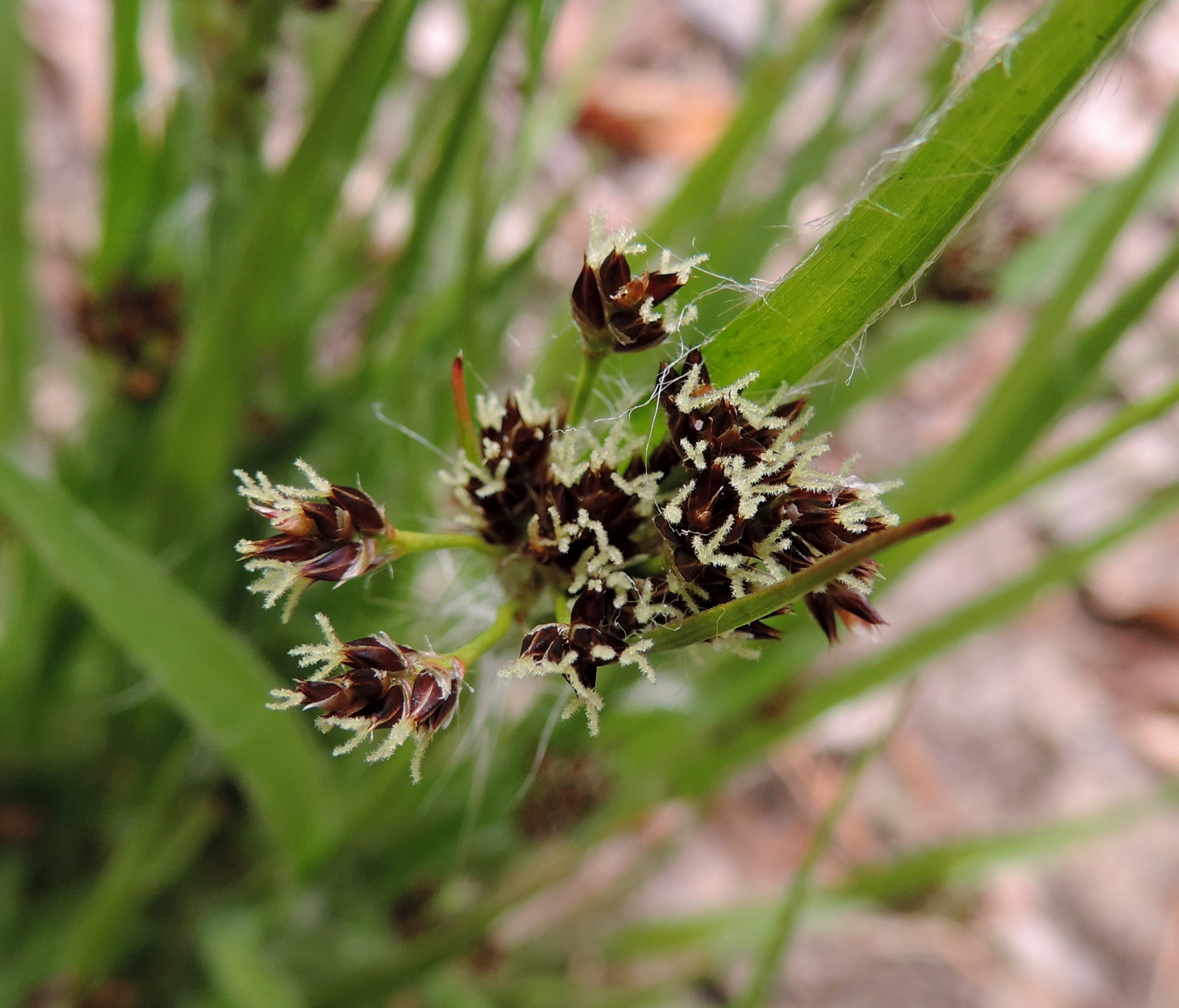Luzula Multiflora on:
[Wikipedia]
[Google]
[Amazon]
''Luzula multiflora'', the common woodrush or heath wood-rush, is a species of flowering plant in the  Common woodrush grows tall with basal leaves long and wide. The flowers have six brown to black tepals long.
Common woodrush is fairly easy to identify with its leaves fringed with long, white hairs (common for ''Luzula'' species) and the terminal, spike clusters of 6-parted flowers on variable length stalks, replaced by round capsules starting in late spring. Common woodrush leaves often turn reddish in response to stressful conditions
''Luzula multiflora'' resembles a grass in its vegetative state, but its seeds and scaly tepals are similar to those of other species in the rush family (Juncaceae). It is also unusual in preferring upland woodland habitats, as most species in the rush family prefer habitats that are more wet and sunny. The habitat for common woodrush is anthropogenic (man-made or disturbed habitats), forest edges, forests, meadows and fields.
Common woodrush grows tall with basal leaves long and wide. The flowers have six brown to black tepals long.
Common woodrush is fairly easy to identify with its leaves fringed with long, white hairs (common for ''Luzula'' species) and the terminal, spike clusters of 6-parted flowers on variable length stalks, replaced by round capsules starting in late spring. Common woodrush leaves often turn reddish in response to stressful conditions
''Luzula multiflora'' resembles a grass in its vegetative state, but its seeds and scaly tepals are similar to those of other species in the rush family (Juncaceae). It is also unusual in preferring upland woodland habitats, as most species in the rush family prefer habitats that are more wet and sunny. The habitat for common woodrush is anthropogenic (man-made or disturbed habitats), forest edges, forests, meadows and fields.
NatureServ: ''Luzula multiflora'' subspecies info-listings
* multiflora Flora of Canada Flora of the Northern United States Flora of the Northeastern United States Flora of the Northwestern United States Flora of the Southwestern United States Flora of the Appalachian Mountains Flora of the Great Lakes region (North America) Flora of the Rocky Mountains Flora of California Plants described in 1794 Flora without expected TNC conservation status {{Poales-stub
rush family
Juncaceae is a family of flowering plants, commonly known as the rush family. It consists of 8 genus, genera and about 464 known species of slow-growing, rhizomatous, herbaceous monocotyledonous plants that may superficially resemble Poaceae, ...
.
It is native to Europe, eastern Asia, northern Africa, northern North America
North America is a continent in the Northern Hemisphere and almost entirely within the Western Hemisphere. It is bordered to the north by the Arctic Ocean, to the east by the Atlantic Ocean, to the southeast by South America and the Car ...
, including Canada, and in northern regions of the United States. The native status of common woodrush is under some debate. While ''Flora of North America
The ''Flora of North America North of Mexico'' (usually referred to as ''FNA'') is a multivolume work describing the native plants and naturalized plants of North America, including the United States, Canada, St. Pierre and Miquelon, and Greenla ...
'' list it as introduced, the more common opinion is it is a circumpolar species native in North America and in parts of Europe and Asia. The taxonomy of the wood rush complex involving several ''Luzula'' spp. has a history of instability. In the past, common woodrush was classified as a variety of a European species, or ''Luzula campestris multiflora''. Both of these species of rush were then also lumped together with another similar species, ''Luzula echinata
''Luzula'' is a genus of flowering plants in the rush family Juncaceae. The genus has a cosmopolitan distribution, with species occurring throughout the world, especially in temperate climate, temperate regions, the Arctic, and higher elevation ...
'' (hedgehog woodrush). As a result, ''Luzula multiflora'' and ''Luzula echinata'' are sometimes confused. Most of the many woodrushes that grow in North America are rather difficult to tell apart. In spite of the resemblance of rushes and woodrushes to grasses or sedges, they have the same number and arrangement of flower parts as lilies.
References
* * *External links
NatureServ: ''Luzula multiflora'' subspecies info-listings
* multiflora Flora of Canada Flora of the Northern United States Flora of the Northeastern United States Flora of the Northwestern United States Flora of the Southwestern United States Flora of the Appalachian Mountains Flora of the Great Lakes region (North America) Flora of the Rocky Mountains Flora of California Plants described in 1794 Flora without expected TNC conservation status {{Poales-stub